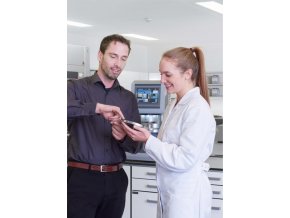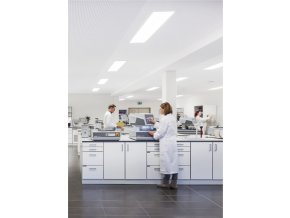Analýza vodíku

The element hydrogen is found in both organic and inorganic materials in a variety of chemical compounds. Therefore, special analyzers for hydrogen analysis are required to reliably determine hydrogen concentrations.
HYDROGEN ANALYSIS IN ORGANIC SAMPLE MATERIALS
For organic sample materials such as coal, wood or waste the hydrogen concentration is an important indicator for the determination of the calorific value. In most cases, hydrogen will be chemically bound in organic material, for example in a carbon-hydrogen compound. It provides additional combustion energy when the material is burnt in coal-fired power plants or cement plants. The water vapor generated during combustion needs to be discharged (evaporated) afterwards to significantly reduce the effective calorific value in the presence of hydrogen.
Hydrogen analysis of organic hydrogen concentrations with elemental analyzers is achieved by combustion in ceramic tube furnaces at temperatures of up to 1550 °C in an oxygen atmosphere. The resulting water vapor is measured in an infrared cell. Some analyzers, such as ELTRA’s CHS-580 and CHS-580A, allow for combined analysis of hydrogen, carbon and sulfur.
HYDROGEN ANALYSIS IN INORGANIC SAMPLE MATERIALS
The properties of inorganic materials such as steel and titanium are clearly influenced by the hydrogen content. The higher the content, the more brittle the material becomes. This can be a problem, especially for medical products such as artifical hips or stents.
Hydrogen analysis in inorganic materials can be achieved with a variety of methods. The most comprehensive analysis (total hydrogen content) is carried out by fusion and successive inert gas fusion, for example with ELTRA’s ONH-p analyzer.
The fusion of the sample takes place in a graphite crucible, heated to 3,000 °C. The released hydrogen is measured in a thermal conductivity cell together with nitrogen as carrier gas. This measurement detects hydrogen in all its possible binding forms: both residual hydrogen and chemically bound hydrogen (e. g. in hydride) is released and detected at these temperatures.
RESIDUAL AND DIFFUSIBLER HYDROGEN CONTENT
The exclusive measurement of residual hydrogen may be achieved at temperatures up to 1000 °C, for example with ELTRA’s H-500. In this temperature controlled quartz tube furnace the sample stays solid during measurement and the residual hydrogen is extracted with nitrogen as carrier gas (inert gas fusion).
The released hydrogen content is measured in a thermal conductivity cell. Depending on the chemical nature of the sample and the temperature applied, only the residual hydrogen is detected but not the chemically bound.
Analyzing the diffusible hydrogen content is a real challenge. With a special sampling device, a sample is taken from molten steel and cooled down slowly to room temperature. The released hydrogen is collected in the sampling device which is opened with a piercer. When the cold sampling device is opened, the collected hydrogen is flushed out with the carrier gas at room temperature and measured in a thermal conductivity cell.
Stránka 1 z 1 - 3 položek celkem
Stránka 1 z 1 - 3 položek celkem



